An effective principal is essential for a successful school (Louis et al., 2010), and critical for school improvement in low performing schools (WestEd, 2014). One recent study uses the image of a successful principal as an architect who works to “redesign the school to create the right environment for its teachers and the right school for its community.” “Architects” were found to be most successful in improving student learning (Hill, Mellon, Laker, Goddard, 2017).
Research indicates that effective principals have the skills to organize their schools to support teachers and set the stage for powerful instruction by promoting positive learning conditions and creating supports for instructional practices known to be effective. They also attract, hire, develop, motivate, and retain better teachers (Bryk, Sebring, Allensworth, Luppescu, & Easton, 2010; Horng & Loeb, 2010; Sebastian & Allensworth, 2013).
But what makes “turnaround” leadership different? Vision. Leading an improvement effort requires principals who can develop, with others, a clearly defined vision for improvement and who are able to communicate their vision to the school community and energize teachers to fulfill it (Council of the Great City Schools, 2015). Turnaround leaders prioritize improvement, instill a sense of urgency, monitor goals, and target supports to meet student needs. Research suggests this can influence staff efficacy, focus efforts on school outcomes, and spark the type of culture shifts described in our previous article (Duke, 2008; Picucci, Brownson, Kahlert, & Sobel, 2002).
Because school leadership is so important for turnaround, it is important to make sure the right principal is in place from the outset. Highly effective teachers are far less likely to teach in schools that do not have highly effective leaders. Sometimes, this means bringing in a new leader if one is not currently present. Some districts have found that the quickest way to get high-quality principals is to provide incentives for the principals to move into the improvement site. Sometimes, this means using school improvement funding to build the capacity of current leaders to support the transformation efforts (The Council of the Great City Schools, 2015). Regardless of the source, the principal should be selected carefully and then supported with coaching (or related supports).
And transformational leaders should not “go it alone” – successful turnaround teams that include teacher leaders and distribute leadership is common in turnaround schools (WestEd, 2014). Recent research from the University of Chicago Consortium on School Research (Sebastian, Allensworth, & Huang, 2016) suggests that successful principals “empower school teachers and staff to take collective ownership of the school vision” and work together to achieve school goals, whereas less effective efforts tended to rely on individuals rather than the collaborative team (Allensworth and Hart, 2018).
In recent years the call for principals to be instructional leaders in the name of supporting student achievement has become standard. However, this has proven problematic because principals cannot develop each teacher in their building alone. Principals alone cannot lead an improvement agenda. Michael Fullan provides a helpful reformulation of the principal role – asking them to be “lead learners” – that are responsible for the creation the environment for teacher leaders and teachers to own and drive instructional improvement. Fullan states, “…the principal does not lead all instructional learning. The principal does work to ensure that intense instructional focus and continuous learning are the core work of the school, and does this by being a talent scout and social engineer, building a culture for learning, tapping others to co-lead, and, well, basically being a learning leader for all” (Fullan, 2014).
Recent research from Richard Ingersoll helps to affirm the role of “lead learner.” Ingersoll identifies three specific elements of instructional leadership that are strongly related to student achievement:
- Holding teachers to high instructional standards
- Providing an effective school improvement team
- Fostering a shared vision for the school
Ingersoll’s findings also support the importance of distributing leadership. For example, schools in which staff had a “large role” in school improvement planning ranked, on average, over 20 percentile points higher in ELA than schools where staff had a “small” role. The data also suggest that school leaders who involve their teachers in student conduct policy decisions has a greater impact on student academic achievement than many other measures.
This is part of a series of articles detailing and providing examples from each of these components. Other articles in the series:
- Overview
- Supporting Structures and Systems
- Culture Shifts
- Turnaround Leadership
- Instructional Transformation
- Talent Management
By Bradford R. White, Interim Director, Illinois Education Research Council (IERC) and David Osta.
Allensworth E. and Hart, H. (March 12, 2018). How Do Principals Influence Student Achievement? Education Week. Retrieved from http://blogs.edweek.org/edweek/urban_education_reform/2018/03/how_do_principals_influence_student_achievement.html?cmp=eml-enl-eu-news3&M=58412030&U=84558
Council of the Great City Schools (2015). School Improvement Grants: Progress Report from America’s Great City Schools. Retrieved from https://www.cgcs.org/cms/lib/DC00001581/Centricity/Domain/87/SIG%20Report%202015.pdf
Fullan, M. (2014). The Principal: Three Keys to Maximizing Impact. John Wiley & Sons, Inc : San Fransisco, CA.
Hill, A., Mellon, L., Laker, B., and Goddard, J. (October 20, 2016). The one type of leader who can turn around a failing school. Harvard Business Review.
Horng, E., & Loeb, S. (2010). New thinking about instructional leadership. Phi Delta Kappan, 92(3), 66–69.
Ingersoll, R., Sirinides, P. and Dougherty, P. (2017). School Leadership, Teachers’ Roles in School Decisionmaking, and Student Achievement. CPRE Working Papers.
Louis, K. S., Leithwood, K., Wahlstrom, K. L., Anderson, S. E., Michlin, M., Mascall, B., & Moore, S. (2010). Learning from leadership: Investigating the links to improved student learning. Minneapolis, MS: University of Minnesota.
Sebastian, J., & Allensworth, E. (2013). How do secondary principals influence teaching and learning? Principal’s Research Review, 8(4).
Sebastian, J., Allensworth, E., & Huang, H. (2016). The role of teacher leadership in how principals influence classroom instruction and student learning. American Journal of Education, 123(1), 69-108.
